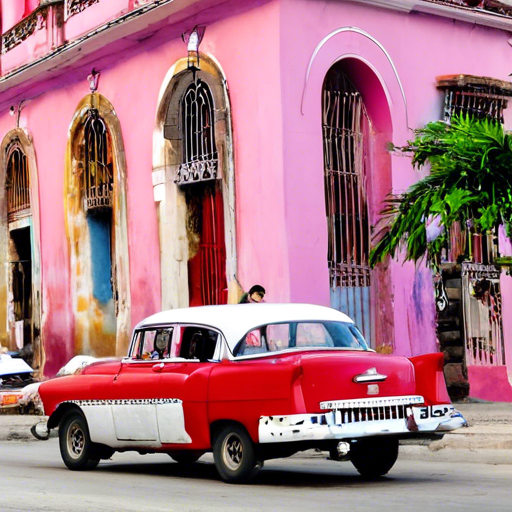cultural insights: understanding cuba before you visit

Cultural Insights: Understanding Cuba Before You Visit
As we prepare for a journey to Cuba, it is essential to delve into the rich cultural tapestry that defines this unique island nation. From its vibrant music and dance to its storied history and resilient people, Cuba offers a wealth of experiences that can be best appreciated with a deeper understanding of its cultural context. This article aims to provide comprehensive insights into Cuban culture, ensuring that your visit is both enriching and respectful.
The Historical Context of Cuba
Understanding Cuba's history is crucial to appreciating its present. The island's past is marked by colonization, revolution, and resilience. Founded by the Spanish in the early 16th century, Cuba remained a Spanish colony until the Spanish-American War in 1898. The subsequent U.S. influence and the Cuban Revolution of 1959, led by Fidel Castro, have significantly shaped the nation's identity.
Key Historical Milestones
- 1492: Christopher Columbus lands in Cuba.
- 1511: Spanish colonization begins.
- 1898: End of Spanish rule following the Spanish-American War.
- 1959: Cuban Revolution leads to the establishment of a socialist state.
These events have left an indelible mark on Cuban society, influencing everything from its political structure to its cultural expressions. The revolution, in particular, is a pivotal moment that continues to resonate in the daily lives of Cubans.
The Vibrant Cuban Culture
Cuban culture is a vibrant blend of African, Spanish, and indigenous influences. This fusion is evident in the island's music, dance, art, and cuisine. To truly appreciate Cuba, one must immerse themselves in these cultural expressions.
Music and Dance
Music and dance are integral to Cuban life. The island is the birthplace of several musical genres, including son, salsa, and mambo. These genres are characterized by their infectious rhythms and are often accompanied by energetic dances.
- Son: A traditional genre that combines Spanish guitar with African rhythms.
- Salsa: A lively dance music that has gained international popularity.
- Mambo: A genre that blends jazz with Afro-Cuban rhythms.
Experiencing live music in Cuba, whether in a bustling Havana club or a quiet village square, is a must for any visitor. The passion and skill of Cuban musicians and dancers are truly captivating.
Art and Literature
Cuban art and literature reflect the island's complex history and diverse cultural influences. From the vibrant murals that adorn Havana's streets to the poignant novels of authors like José Martí and Alejo Carpentier, Cuban art is both expressive and thought-provoking.
- Visual Arts: Cuban art is known for its bold colors and political themes.
- Literature: Cuban literature often explores themes of identity, revolution, and exile.
Visiting art galleries and literary landmarks can provide deeper insights into the Cuban psyche and the issues that have shaped the nation's narrative.
Cuban Cuisine
Cuban cuisine is a delightful blend of Spanish, African, and Caribbean flavors. The island's culinary traditions are rooted in its history and geography, with an emphasis on fresh, locally sourced ingredients.
Traditional Dishes
Some of the most iconic Cuban dishes include:
- Ropa Vieja: Shredded beef cooked with tomatoes, onions, and peppers.
- Moros y Cristianos: Black beans and rice, a staple of Cuban cuisine.
- Lechón Asado: Roast pork, often served during festive occasions.
Sampling these dishes at local paladares (private restaurants) offers a taste of Cuba's culinary heritage. The flavors are rich and comforting, reflecting the island's diverse cultural influences.
Social Etiquette and Customs
Understanding social etiquette and customs is essential for respectful and meaningful interactions with Cubans. The island's social norms are shaped by its history, culture, and socialist values.
Greetings and Communication
Cubans are known for their warmth and hospitality. Greetings are often accompanied by a kiss on the cheek or a firm handshake. When engaging in conversation, it is important to be polite and respectful.
- Greetings: A kiss on the cheek or a handshake is common.
- Conversation: Politeness and respect are valued.
Engaging with locals in a friendly and respectful manner can lead to enriching cultural exchanges and a deeper understanding of Cuban life.
Gift-Giving and Hospitality
Gift-giving is a common practice in Cuba, especially when visiting someone's home. Small, thoughtful gifts are appreciated and seen as a gesture of goodwill.
- Gifts: Small, thoughtful gifts are appreciated.
- Hospitality: Cubans are known for their generosity and hospitality.
Accepting invitations to share a meal or a drink with locals can provide a glimpse into Cuban hospitality and the importance of community in Cuban culture.
Practical Tips for Visitors
Before embarking on your journey to Cuba, it is important to be prepared with practical information to ensure a smooth and enjoyable trip.
Travel and Accommodation
Traveling to Cuba requires some planning, especially regarding visas and accommodation. It is advisable to book accommodations in advance, particularly during peak tourist seasons.
- Visas: Ensure you have the necessary visa for entry.
- Accommodation: Book in advance, especially during peak seasons.
Staying in casas particulares (private guesthouses) offers a more authentic experience and the opportunity to interact with local families.
Currency and Expenses
Cuba has a dual currency system, with the Cuban Peso (CUP) and the Cuban Convertible Peso (CUC). Tourists typically use CUC, but it is helpful to have some CUP for local transactions.
- Currency: Familiarize yourself with the dual currency system.
- Expenses: Budget for both CUC and CUP transactions.
Carrying cash is advisable, as credit cards are not widely accepted. It is also important to be aware of the exchange rates and fees associated with currency conversion.
Conclusion
Understanding Cuba's rich cultural heritage and social norms is essential for a meaningful and respectful visit. By immersing ourselves in the island's history, music, art, cuisine, and customs, we can gain a deeper appreciation for the resilience and vibrancy of the Cuban people. As we prepare for our journey, let us approach it with an open mind and a respectful heart, ready to embrace the unique experiences that Cuba has to offer.
FAQ
| Question | Answer |
|---|---|
| What is the best time to visit Cuba? | The best time to visit Cuba is from November to April, during the dry season. |
| Do I need a visa to visit Cuba? | Yes, most visitors need a visa to enter Cuba. Check with your local Cuban embassy for specific requirements. |
| What currency is used in Cuba? | Cuba uses two currencies: the Cuban Peso (CUP) and the Cuban Convertible Peso (CUC). Tourists typically use CUC. |
| Is it safe to travel to Cuba? | Yes, Cuba is generally safe for tourists. However, it is always advisable to take standard precautions and stay informed about local conditions. |
| Can I use credit cards in Cuba? | Credit cards are not widely accepted in Cuba. It is advisable to carry cash for most transactions. |
For more travel tips and insights, visit this travel advice site.
